Our Local Heritage
A fascinating collection of stories and articles covering the diverse local heritage of Marple and District.
The articles are presented in Blog format (in title order) or as an article listing (also in title order).
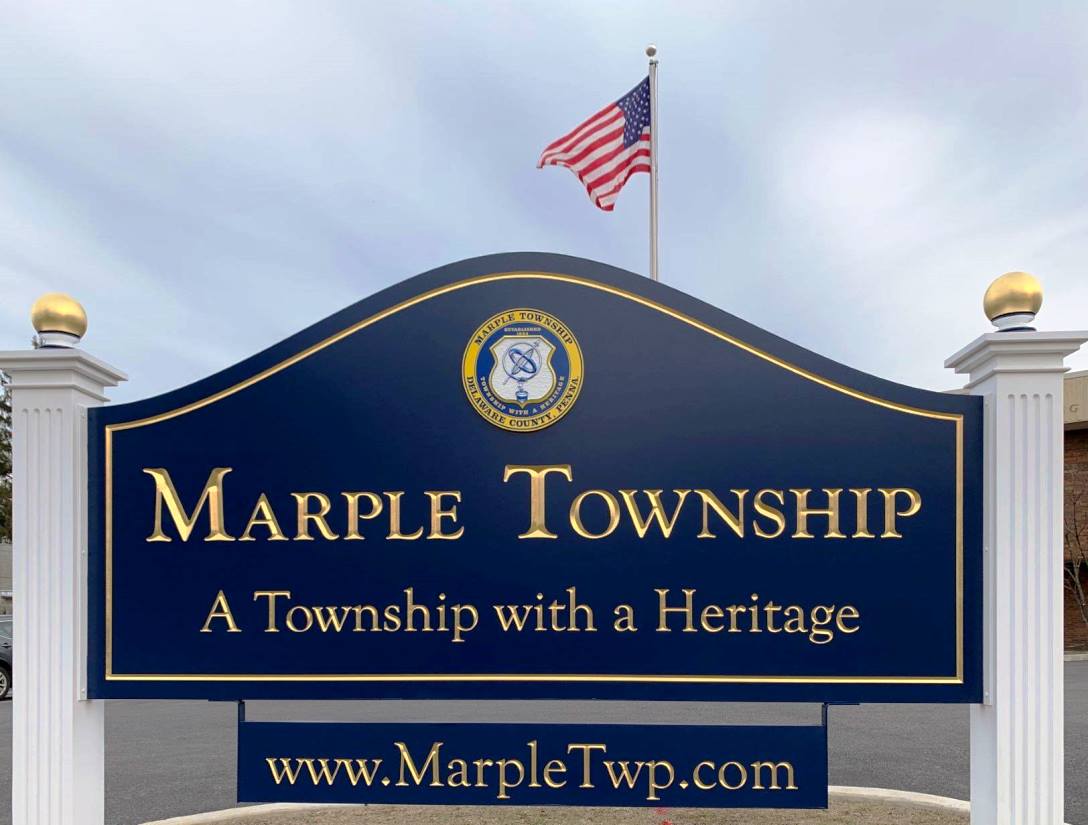 The Battle of Hastings and the disruption of Anglo-Saxon control brought about many changes in the way this country was organised because the Normans had a very different philosophy. Under the Anglo-Saxons each ‘shire’ was divided into an unlimited number of ‘hundreds’. A hundred was ten groups of ten households and each household held one ‘hide’ of land. A hide was enough land to support one household so it could obviously vary considerably in size. Although Anglo-Saxon society was essentially feudal in character, the Norman system was much more severe - more centralised, more rigid and very thorough. The Anglo-Saxon ‘shire’ was retained though it was now called a county but all land was ‘held’ by the king and he had the right to dispose of it as he saw fit. He did this by awarding ‘fiefs’ to his followers and supporters but these were generally small and given out piecemeal so that no one had a large power base.
The Battle of Hastings and the disruption of Anglo-Saxon control brought about many changes in the way this country was organised because the Normans had a very different philosophy. Under the Anglo-Saxons each ‘shire’ was divided into an unlimited number of ‘hundreds’. A hundred was ten groups of ten households and each household held one ‘hide’ of land. A hide was enough land to support one household so it could obviously vary considerably in size. Although Anglo-Saxon society was essentially feudal in character, the Norman system was much more severe - more centralised, more rigid and very thorough. The Anglo-Saxon ‘shire’ was retained though it was now called a county but all land was ‘held’ by the king and he had the right to dispose of it as he saw fit. He did this by awarding ‘fiefs’ to his followers and supporters but these were generally small and given out piecemeal so that no one had a large power base.
- Details
- Category: Our Local Heritage
- Hits: 802
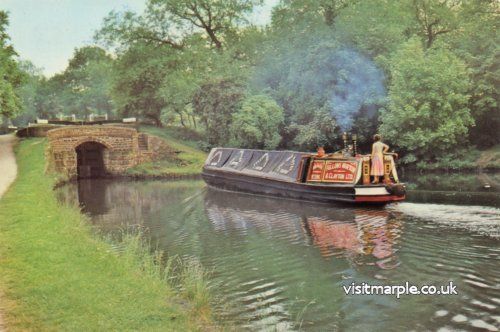
Familiarity breeds contempt but it can also lead us to looking at our surroundings quite casually. How much do we really notice? One of the favourite parts of our local heritage is the Peak Forest Canal and particularly the locks. How many times have you walked up (or down) the locks? You must know every inch. Or do you?
- Details
- Category: Our Local Heritage
- Hits: 5760
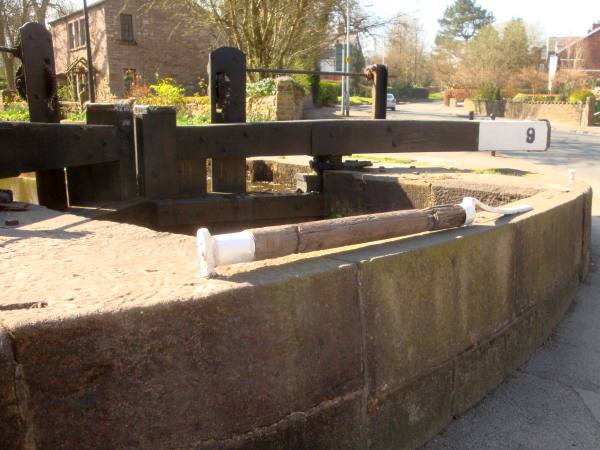 Brabyns Brow marks an obvious division in the Marple flight between the lower eight and upper eight locks. It is approximately halfway, not just in the number of locks but also in the distance covered. Another distinction is that this is the point at which the towpath crosses over the canal. The towpath is on the eastern side for the lower eight locks but crosses over to the western side for the upper eight.
Brabyns Brow marks an obvious division in the Marple flight between the lower eight and upper eight locks. It is approximately halfway, not just in the number of locks but also in the distance covered. Another distinction is that this is the point at which the towpath crosses over the canal. The towpath is on the eastern side for the lower eight locks but crosses over to the western side for the upper eight.
- Details
- Category: Our Local Heritage
- Hits: 6763
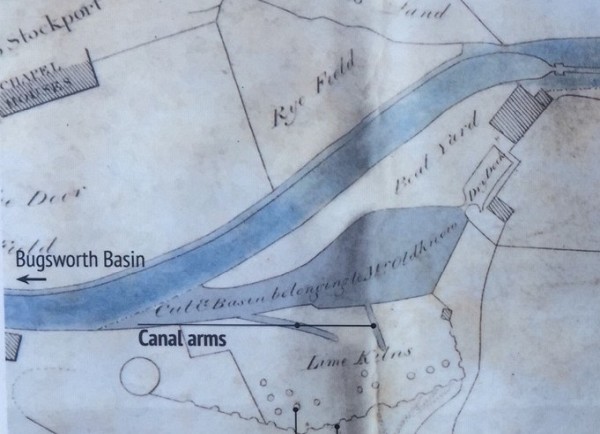 Standing on Bridge No 1, the first bridge on the Macclesfield Canal, with your back to the old toll house, Marple Marina is spread out before you. The open water of Top Lock with the branch beyond, lined with boats of every size and shape and colour, present a very peaceful scene but it was not always thus. Just like Black Wharf at Lock 12, in its heyday Top Lock was the centre for various activities all centred around the canal.
Standing on Bridge No 1, the first bridge on the Macclesfield Canal, with your back to the old toll house, Marple Marina is spread out before you. The open water of Top Lock with the branch beyond, lined with boats of every size and shape and colour, present a very peaceful scene but it was not always thus. Just like Black Wharf at Lock 12, in its heyday Top Lock was the centre for various activities all centred around the canal.
- Details
- Category: Our Local Heritage
- Hits: 4093
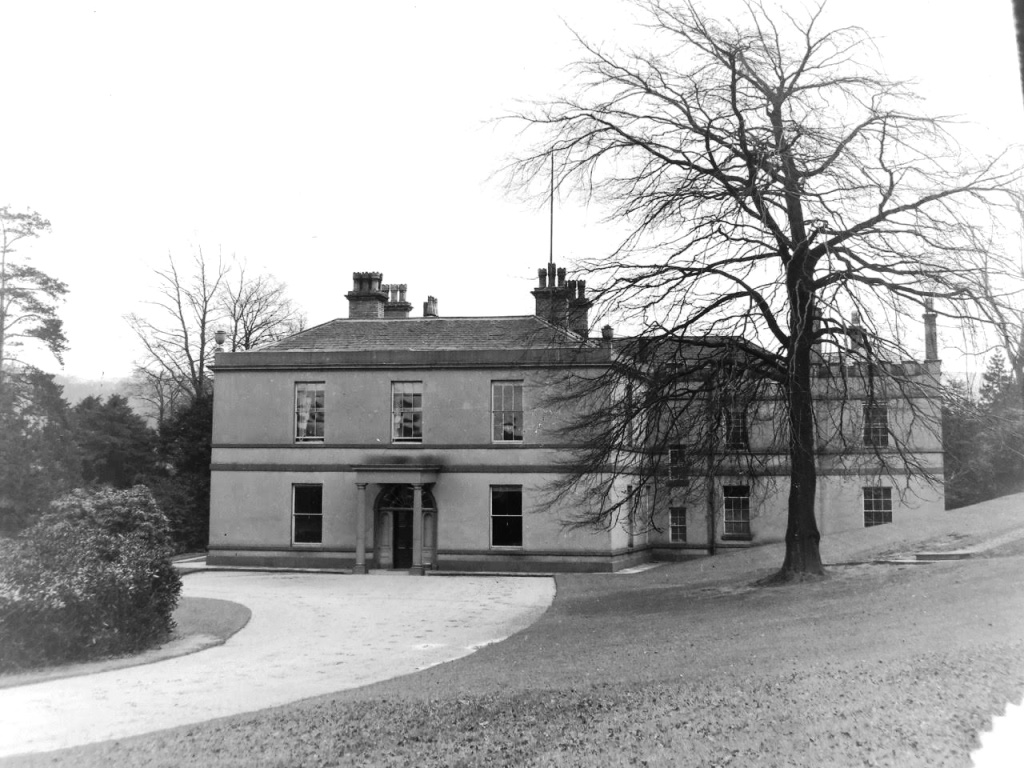 Most members of MLHS will be familiar with Brabyns Park with its recreational meadows, playing fields, riverside and woodland walks, car park (plus a new additional one nearer the river), children’s playground, pond and pets cemetery. Many will have bought various publications at ourmeetings and will know from these, and society talks, that the Park is named after Brabyns Hall which was a Georgian house built in 1745 by Henry Brabin around a much earlier farm house, and that the most recent incarnation of the Hall was demolished in 1952 after it had been allowed to deteriorate so much that there was no other option. Most members will be aware that they are parking their cars on the site of the hall and the playground area and the pond were part of its garden.
Most members of MLHS will be familiar with Brabyns Park with its recreational meadows, playing fields, riverside and woodland walks, car park (plus a new additional one nearer the river), children’s playground, pond and pets cemetery. Many will have bought various publications at ourmeetings and will know from these, and society talks, that the Park is named after Brabyns Hall which was a Georgian house built in 1745 by Henry Brabin around a much earlier farm house, and that the most recent incarnation of the Hall was demolished in 1952 after it had been allowed to deteriorate so much that there was no other option. Most members will be aware that they are parking their cars on the site of the hall and the playground area and the pond were part of its garden.
In our walks we often ponder about the history of the paths, narrow and wide, and old gateposts, walls, and an iron bridge. One set of features particularly attracted my attention and inspired me to do some research and write this article for the newsletter.
- Details
- Category: Our Local Heritage
- Hits: 2015
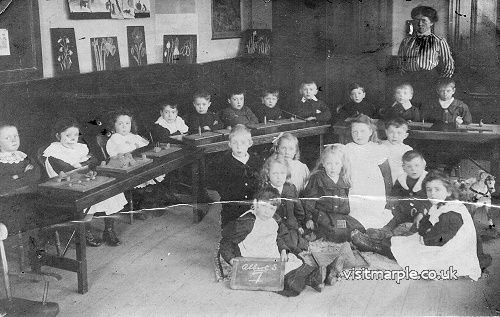 So, the Albert Schools will soon be no more. Its familiar facade has been a part of this community for 150 years so perhaps we should learn a little about it before it is gone forever. It has only been a school for less than half that 150-year history but why the name “Albert” and why “Schools” (plural)?
So, the Albert Schools will soon be no more. Its familiar facade has been a part of this community for 150 years so perhaps we should learn a little about it before it is gone forever. It has only been a school for less than half that 150-year history but why the name “Albert” and why “Schools” (plural)?
To answer that we need to look at the way we educated our children in centuries past.
- Details
- Category: Our Local Heritage
- Hits: 8623
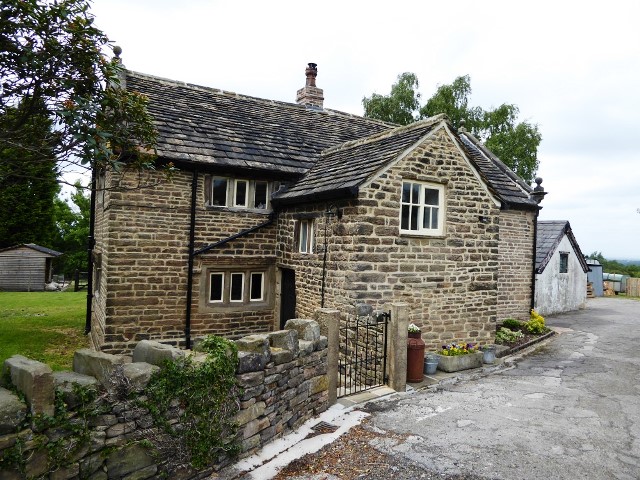 To travel from Marple towards High Lane, you will set off along Hibbert Lane, and cross the Macclesfield Canal using Ecclesbridge when the road becomes Upper Hibbert Lane, and steepens, passing Goyt Mill on the right, and the 1686 house (oldest in Marple) on the left, with the Reading Room on the right. Just beyond, the road flattens out and becomes known as Windlehurst Road and will take you to the Horse Shoe traffic lights junction with the A6 in High Lane. Back in Hawk Green, the start of Windlehurst Road is at a cross roads with Hawk Green Road and Barnsfold Road, and it is down here we shall go today. For most this is the access to Marple Golf Club, but long before we get there, and just before we cross the Macclesfield Canal by Bridge 5, we come to the hamlet of Barnsfold. Until recently this was a community of just four dwellings, but in the last few years conversions of old buildings have added three to the total.
To travel from Marple towards High Lane, you will set off along Hibbert Lane, and cross the Macclesfield Canal using Ecclesbridge when the road becomes Upper Hibbert Lane, and steepens, passing Goyt Mill on the right, and the 1686 house (oldest in Marple) on the left, with the Reading Room on the right. Just beyond, the road flattens out and becomes known as Windlehurst Road and will take you to the Horse Shoe traffic lights junction with the A6 in High Lane. Back in Hawk Green, the start of Windlehurst Road is at a cross roads with Hawk Green Road and Barnsfold Road, and it is down here we shall go today. For most this is the access to Marple Golf Club, but long before we get there, and just before we cross the Macclesfield Canal by Bridge 5, we come to the hamlet of Barnsfold. Until recently this was a community of just four dwellings, but in the last few years conversions of old buildings have added three to the total.
- Details
- Category: Our Local Heritage
- Hits: 996
 The side of the British Home Stores building presented a bare and uninteresting blank wall to an alley called Deanery Way until, in 1978, BHS commissioned artists Joyce Ballot and Henry Collins of Colchester Art Society to design a series of five concrete mural panels to brighten this up by telling the story of the town, starting at Merseyway, and finishing at Princes Street.
The side of the British Home Stores building presented a bare and uninteresting blank wall to an alley called Deanery Way until, in 1978, BHS commissioned artists Joyce Ballot and Henry Collins of Colchester Art Society to design a series of five concrete mural panels to brighten this up by telling the story of the town, starting at Merseyway, and finishing at Princes Street.
- Details
- Category: Our Local Heritage
- Hits: 2011
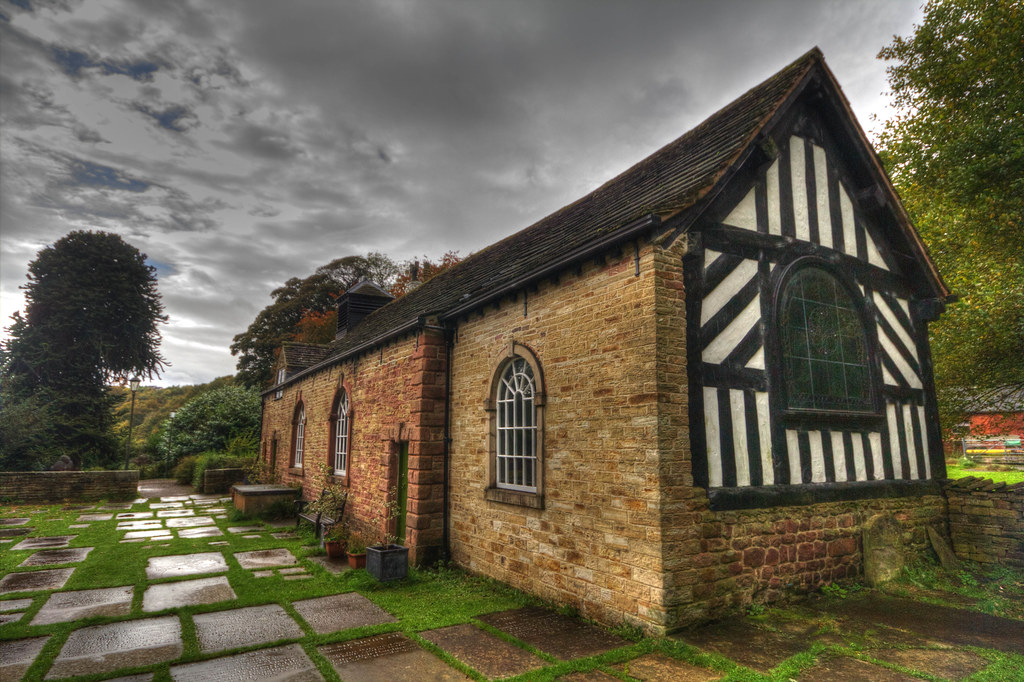 The origins of Chadkirk Chapel are lost in the Mists of Time, or, more accurately, lost in Myths and Legends. However, it is safe to say that it is probably the oldest ecclesiastical building in the borough as well as holding a Grade II* classification.
The origins of Chadkirk Chapel are lost in the Mists of Time, or, more accurately, lost in Myths and Legends. However, it is safe to say that it is probably the oldest ecclesiastical building in the borough as well as holding a Grade II* classification.
- Details
- Category: Our Local Heritage
- Hits: 4830
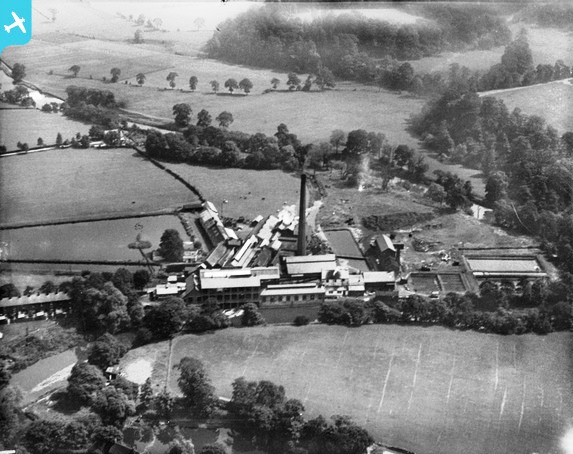 In September 1755 William Wright leased a plot of land from George Nicholson, the owner of the Chadkirk Estate, for a period of fifty years. He wanted to build a mill for textile finishing - bleaching, dyeing and printing. At the time, although Britain had a reputation for producing raw materials such as wool and flax it was still only a cottage industry when it came to producing finished textiles. If woven cloth was to be bleached and dyed it was sent to Holland and the finest printed cottons came from India - no local producer could match them for quality. But things were beginning to change.
In September 1755 William Wright leased a plot of land from George Nicholson, the owner of the Chadkirk Estate, for a period of fifty years. He wanted to build a mill for textile finishing - bleaching, dyeing and printing. At the time, although Britain had a reputation for producing raw materials such as wool and flax it was still only a cottage industry when it came to producing finished textiles. If woven cloth was to be bleached and dyed it was sent to Holland and the finest printed cottons came from India - no local producer could match them for quality. But things were beginning to change.
- Details
- Category: Our Local Heritage
- Hits: 3636
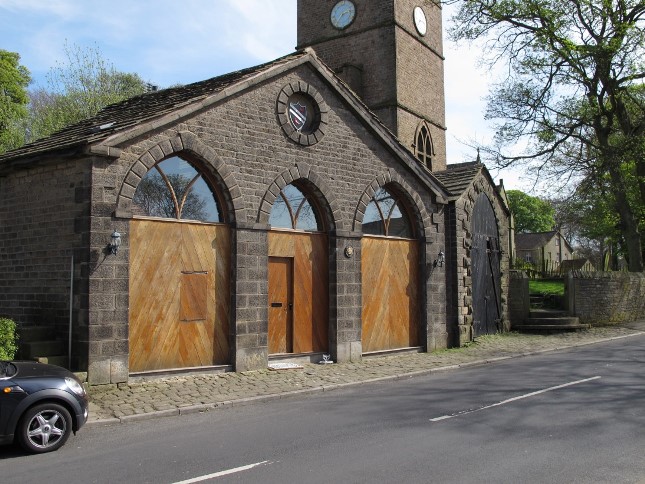 There is an unusual building on Church Lane, close to the tower of the old Georgian church. To be precise it is two buildings, roughly joined together at a slight angle and presenting four pointed-arch bays to the road. Although there are architectural differences, both buildings are built of dressed stone with separate graduated split-stone roofs.
There is an unusual building on Church Lane, close to the tower of the old Georgian church. To be precise it is two buildings, roughly joined together at a slight angle and presenting four pointed-arch bays to the road. Although there are architectural differences, both buildings are built of dressed stone with separate graduated split-stone roofs.
- Details
- Category: Our Local Heritage
- Hits: 7698
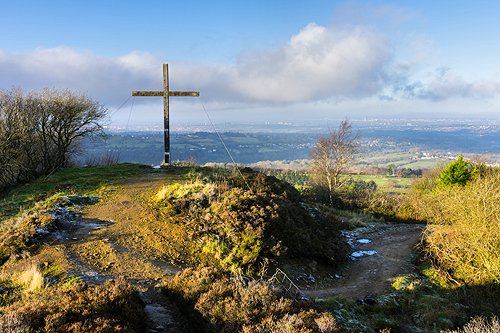
Use your favourite search engine to investigate the whys and wherefores of Cobden Cross. The result is peppered with those who experience the cross and area in different ways.
But what is the story about this cross on top of its hill? And why did a cross appear on the Ridge in 1969?
- Details
- Category: Our Local Heritage
- Hits: 2001
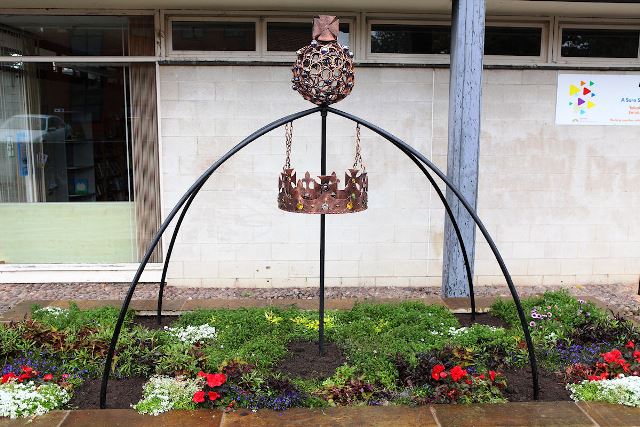
Building the new Community Hub in the park means that we have lost the metal sculpture resembling a crown that has enjoyed pride of place in front of the library since Queen Elizabeth’s Diamond Jubilee in 2012. It has not been lost forever as a prime position has been reserved for it in the new scheme, thanks to the lobbying efforts of the Friends of Marple Memorial Park but it gives us a chance to remind ourselves of how this relatively new piece of Our Local Heritage came about. It sounds simple but the process was much more involved and tortuous than you might expect.
- Details
- Category: Our Local Heritage
- Hits: 279

